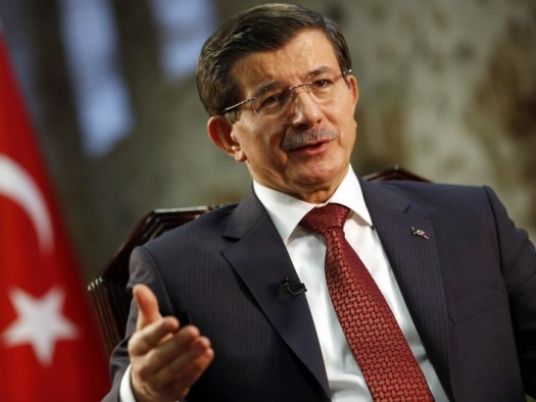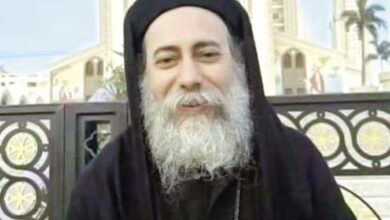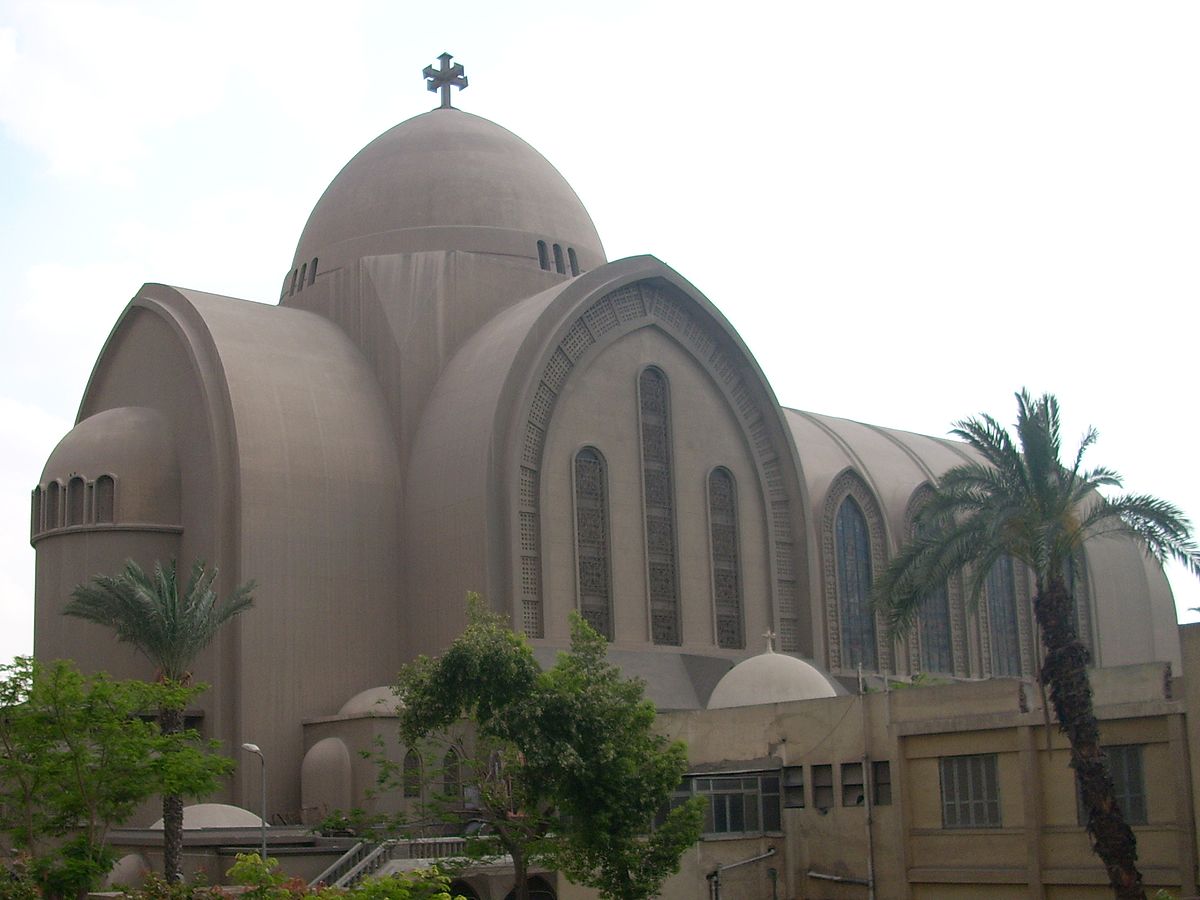
It is hard for Egyptians to imagine a Coptic Church and papacy without the late Shenouda III, both because his 40-year leadership was the only one they had ever known, and because of the far-reaching changes he made in the church’s relationship with the Coptic flock.
To place Shenouda in the context of his predecessors, Egypt Independent recently spoke with Febe Armanios, an associate professor of history at Middlebury College and the author of "Coptic Christianity in Ottoman Egypt."
Egypt Independent: You speak about the church as being a sort of modern state representative on behalf of the Copts and the pope fulfilling the leadership position. How did that come about?
Febe Armanios: In the 1970s, Pope Shenouda’s role becomes more politicized because of the rise of Islamic religious politics in Egypt, and also because the pope took a strong position on behalf of Palestinian rights in contradiction to President [Anwar] Sadat’s policies. Having said that, I don’t just think the church expanded its political role because of these developments. There were active policies by the pope and other clerical leaders to broaden the church’s spiritual and religious role among Copts and to become more present in the day-to-day lives of every single Coptic believer.
EI: So, what did the papacy look like before this expanded role?
Armanios: If we go back to the Ottoman era, which is my area of expertise, the pope was essentially seen as the religious and communal leader of the Copts. This was the case of all non-Muslim religious communities in the Ottoman Empire.
At certain points in history, the pope would have been formally charged with collecting the jizya tax [a levy on an Islamic state’s non-Muslim inhabitants] that was paid to the Islamic state. But in the Ottoman period, the patriarch relied on the expertise, knowledge and wealth of elite lay members of the community — called archons — who collected the jizya and helped offset any shortages in its payment. In Egypt, the poor were often too poor to pay, so the wealthy would cover the tax on their behalf, as a kind of communal philanthropy.
The archons in the Ottoman period would become quite powerful and would ultimately help administer the church in financial and political matters. So there was a strong interdependent relationship between these lay leaders, the pope and the clergy.
You could even make the argument that in the 17th and 18th centuries, these lay elites exerted much more political power within the community than the patriarch. In more recent history, Pope Cyril VI and Pope Shenouda both represent a shifting of the nexus of authority in the community from the laity to the clerical leadership.
EI: Did Cyril make that shift due to the sociopolitical environment in Egypt, or because of internal considerations inside the church?
Armanios: Pope Cyril VI began his papacy after a decade or so of internal weakness. It is possible to argue that the 1950s was the decade in which you still saw the legacy of the Ottoman period: tensions between strong lay members who were vocal about how the church should be run and represented in Egypt and a rising group of clerical leaders who believed that the church needed stronger religious authority.
Pope Cyril’s predecessor, Pope Yusab II, was relieved of his papal duties in 1955 due to some internal conflict with both lay and clerical leaders. Yusab was alleged to have engaged in some corrupt activities and was removed from office by the Holy Synod and the Coptic Community Council. The church was run by a committee of three bishops and an acting pope who helped oversee Cyril’s selection in 1959.
EI: How did Cyril’s selection happen?
Armanios: That election changed existing practices in many ways. In 1956, the Egyptian government, under President [Gamal Abdel] Nasser, outlined new guidelines for the election of the pope, and the enforcement of these new rules deferred the election of a new pope for a few years. Also, there was some internal debate about who would make the best leader, a debate between the Coptic Communal Council which represented the interests of the lay community and the Holy Synod which represented the religious leadership. Changes were made during this period by the Holy Synod requiring the new pope to have served as a monk for at least 15 years and to be at least 40 years old. A debate also existed about whether the pope should be a monk or a bishop. I should note here that bishops — as opposed to monks — have been rarely elected as popes in Coptic Church history. Also in deviation from most traditional practices, the election was done by “altar lottery” and the names of the final three candidates were placed in a box with one name selected by a child.
EI: It seems like the lay people used to have a more visible role in the church. Would it be fair to say the pope really had to count on the lay people to oversee the community?
Armanios: Throughout history, but especially in the Ottoman period, donations were gathered from the lay community to repair and rebuild churches, to patronize the art of iconography and to preserve the church’s religious literature. Most of these funds came from the lay elites within the community.
This point ties to the question of who has had the right, historically, to represent the Copts, as well as how Copts, and Muslims, understand their place in Egypt today. That is, what role should religious identification and religious — versus lay — leadership play in a modern Egyptian nation-state?
Both the 1919 and 2011 revolutions showed that religious markers were important but that they should merge with the cause of Egyptian nationalist unity. In both revolutions, popular slogans and flags of crescents and crosses emphasized the absolute unity of Muslims and Christians as being “one hand,” one unified body for the cause of Egypt.
EI: So you mentioned 1919. I’m thinking of major upheavals in Egyptian society, and what kind of role the church played. Is there a pattern in how the church reacted in 1919, 1952 and 2011?
Armanios: The events in 1919 were truly an interreligious collaboration. Muslim preachers were coming into churches to mobilize Christians, and Christian leaders spoke to Muslim audiences. The unified spirit was one of religious collaboration and support, and among the Copts, both church and lay representatives strongly believed in mobilization against the British occupation.
The revolution of 1952 was supported by many Egyptians, Copts and Muslims, but it also coincided with a period of weak clerical leadership. As I mentioned, there was some internal turmoil in the leadership structure for most of the 1950s, and many Copts focused on building new, positive institutions within the community. For example, it was during this period that the Sunday school movement was developed and began to flourish.
It is widely known that Pope Shenouda was opposed to Copts joining the protests in 2011, although he worked in this last year to promote ideals of democracy, social justice and civilian government, all while maintaining strong relations with various Egyptian military, political and religious leaders.
EI: Now that we have this historical context I want to move back to what is happening today. There seems to be a historical legacy of state and citizen, clergy-lay conflict? Would you explain it as a conflict?
Armanios: No, I think it’s a dynamic, which can sometimes take the form of tensions and disagreements. Conflict might be too strong. Moving forward, many Copts are wondering how this dynamic will play out and shape the community. This moment of Shenouda’s passing is a moment of anxiety and in such a moment, the question might be: Will unity prevail so that any lingering tensions are muted? Pope Shenouda’s reign has empowered clergymen, bishops and priests, and whether new groups of Coptic lay actors will demand more visibility and representation in their church remains to be seen.
EI: Have any clerical leaders that would support this vision emerged?
Armanios: A few names of papal candidates have been floated in the media recently, but I think there might be more variety about potential leaders than has been represented in the news. Some Copts would like to see the next pope elected from the monasteries, that he would be a monk like Pope Cyril VI was, and not a bishop like Pope Shenouda.
As I mentioned, most popes were elected from the rank of monks historically and some Copts believe that it might be time to include, among the candidates, not just the names of the most visible bishops but perhaps others who are more removed from the hubbub of Cairo-based politics. All of this will be discussed within the community, I’m sure, once the period of mourning has passed.




